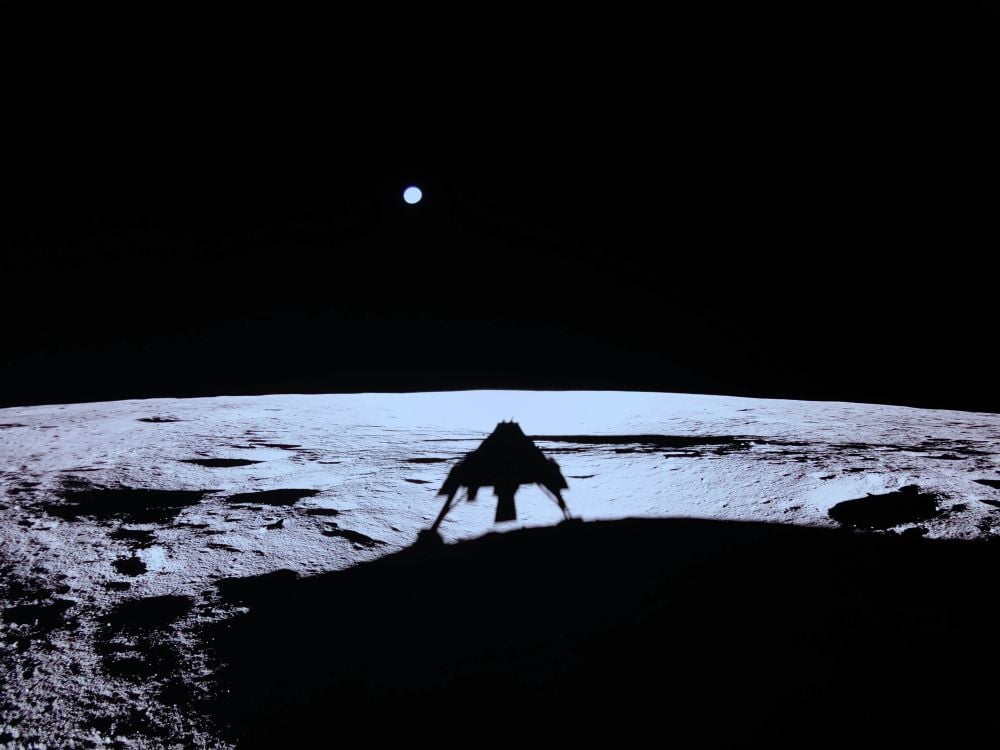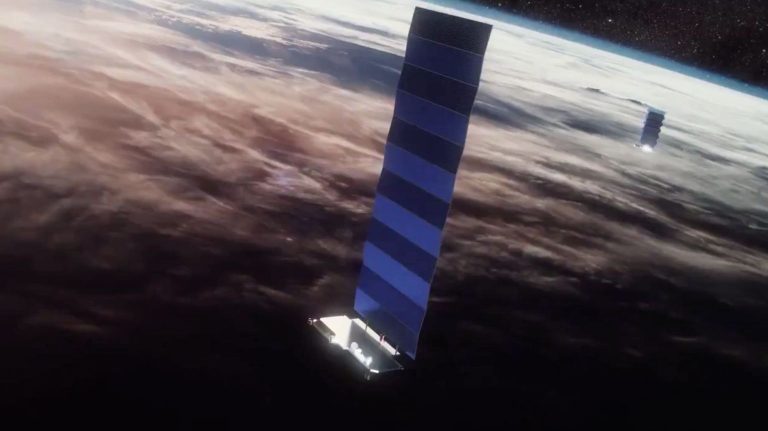NASA’s Cutting-Edge Dust Repelling Shield: Success in Action
NASA has developed an innovative Electrodynamic Dust Shield (EDS) system to tackle the persistent hazards of lunar dust, ensuring safer and more sustainable operations on the Moon. This breakthrough not only mitigates the risk to equipment and astronauts but also paves the way for future lunar and interplanetary missions.
Summary
- NASA’s innovative Electrodynamic Dust Shield (EDS) system addresses the longstanding challenge of lunar dust.
- The EDS uses electrodynamic forces to prevent dust particles from sticking to surfaces.
- Lunar dust poses risks due to its fine, sharp, and abrasive nature.
- Testing during the Blue Ghost Mission 1 demonstrated significant dust removal from surfaces.
- The system shows promise for protecting thermal radiators, solar panels, camera lenses, and spacesuits.
- The technology is a major milestone in supporting long-term lunar exploration.
- The system could have broader applications for interplanetary missions.
- Dust hazards have been a concern since the Apollo era.
- Lunar dust is uniquely problematic due to its electrostatic charge.
- NASA’s success with EDS offers hope for safer, more efficient lunar bases.
- The test results from Blue Ghost Mission 1 have been validated by both NASA and private aerospace partners.
- The breakthrough addresses environmental challenges that were once thought insurmountable.
- The system’s development highlights a collaboration between NASA and commercial aerospace, marking a new era in space exploration.
- The project sets a reference point for future research on dust mitigation.
- The innovative approach of using electrodynamic forces is a game changer in space technology.
Introduction
Lunar exploration has always been challenged by many hazards, and lunar dust remains one of the most persistent and dangerous. Unlike dust on Earth, lunar dust is fine, abrasive, and charged due to constant bombardment by solar radiation. In the early Apollo missions, dust not only impaired vision during landings but also risked damage to critical components. NASA’s commitment to ensuring astronaut safety and mission success led to the development of a pioneering technology—the Electrodynamic Dust Shield (EDS).
The Challenge of Lunar Dust
Lunar dust poses unique problems that cannot be solved by conventional cleaning methods. On the Moon, the absence of an atmosphere means there is no wind to erode the sharp edges of dust particles. As a result, these particles remain jagged and abrasive. The dust’s tiny size allows it to infiltrate seals and joints, wear down mechanical components, and even cause lung and eye irritation if inhaled. The electrostatic charge that lunar dust carries causes it to adhere stubbornly to surfaces, making the issue even more severe. NASA has been aware of these challenges since the Apollo era, when concerns were raised that dust could cause equipment to malfunction or even jeopardize astronaut health.
The Electrodynamic Dust Shield (EDS) System
To address these challenges, NASA developed the Electrodynamic Dust Shield (EDS) system. This system employs electrodynamic forces to repel dust particles from surfaces. The concept is relatively simple yet highly effective: by generating an electric field across a surface, the EDS causes the charged dust particles to be repelled, keeping critical equipment and surfaces clean.
Table 1: Lunar Dust Hazards Versus EDS Benefits
| Hazard | Impact | EDS Benefit |
|---|---|---|
| Fine, sharp dust particles | Abrasion of equipment and spacesuit materials | Prevents adhesion of abrasive dust |
| Electrostatic charge | Dust sticking to surfaces | Electrodynamic forces repel dust |
| Infiltration of seals and joints | Compromising mechanical integrity | Maintains equipment functionality |
| Potential health risks (lungs, eyes) | Long-term exposure causing damage | Reduces risk of exposure for astronauts |
| Obstruction of optical devices | Impaired vision and sensor performance | Keeps surfaces clear for optimal performance |
During testing on the Blue Ghost Mission 1—a collaborative effort involving private aerospace firm Firefly Aerospace and NASA—the EDS system was applied to two different surfaces. The results were promising, as a significant amount of dust was cleared from the surfaces, demonstrating that the technology could be an effective countermeasure for dust-related hazards.
Testing and Results
The Blue Ghost Mission 1 was a landmark test for the EDS system. The mission, which marked the first fully successful soft landing by a private spacecraft on the Moon, provided the perfect opportunity to evaluate the performance of the dust shield in a real lunar environment. As the robotic lander descended, dust was inevitably disturbed. The EDS system was activated, and before-and-after images clearly showed a noticeable reduction in dust accumulation.
A key observation during the tests was the system’s ability to work across different surface materials and textures. While the shield did not completely remove all dust, its capacity to significantly clear the majority of the dust from surfaces was seen as a major success. This reduction is critical for the operation of delicate instruments such as solar panels and camera lenses.
In the words of Apollo 17 astronaut Harrison “Jack” Schmitt, “Dust is going to be the environmental problem for future missions, both inside and outside habitats.” This statement underlines the importance of addressing dust hazards and validates the need for an effective solution like the EDS.

Table 2: Summary of Test Outcomes
| Test Parameter | Observed Outcome | Significance |
|---|---|---|
| Dust removal efficiency | High percentage of dust cleared from test surfaces | Enhances equipment reliability |
| Compatibility with various surfaces | Effective across different materials and textures | Versatility in application for multiple assets |
| Impact on sensitive instruments | Minimal interference with optical and sensor operations | Essential for scientific and operational tasks |
| Durability under lunar conditions | Withstood extreme temperatures and radiation | Reliability in harsh space environments |
| Future scalability | Potential adaptation for larger systems and varied missions | Promising for broader interplanetary applications |
Broader Implications and Future Applications
The successful test of the EDS system is not just a win for lunar exploration; it also opens new avenues for future space missions. With this technology, long-term lunar bases and interplanetary missions can greatly benefit from reduced maintenance costs and fewer mission-critical failures. The technology has potential applications beyond just the lunar surface. It could be adapted for Mars, where dust storms and fine particulate matter pose similar challenges.
Moreover, the successful demonstration of EDS technology fosters a closer relationship between NASA and private aerospace companies. The collaboration with Firefly Aerospace in missions like Blue Ghost Mission 1 represents a shift toward public-private partnerships in tackling space exploration challenges. This partnership model could accelerate the development and deployment of innovative solutions to overcome the environmental hurdles of space.
NASA’s development and successful testing of the Electrodynamic Dust Shield (EDS) system marks a transformative moment in space exploration. By addressing the hazardous properties of lunar dust, NASA is paving the way for safer and more sustainable operations on the Moon and beyond. The innovative approach not only protects equipment and astronauts but also sets the stage for future missions that will explore even more distant and challenging environments.
The implications of this breakthrough are vast. With continued research and development, similar technologies may soon become standard on spacecraft and habitats, reducing the risks associated with space dust and increasing mission longevity. The EDS system is a clear example of how addressing a seemingly small problem can have enormous benefits for space exploration as a whole.
NASA’s advancements in dust mitigation are an inspiration for future research and technological development. As the space community continues to explore the unknown, the lessons learned from the EDS system will undoubtedly serve as a cornerstone for future innovations in overcoming environmental challenges in space.
Facts
- The lunar surface is covered in a layer of dust known as regolith.
- The Apollo missions provided some of the first insights into the challenges posed by lunar dust.
- NASA continues to collaborate with commercial partners to enhance space technology.
- The EDS system is part of NASA’s broader initiative to create sustainable lunar habitats.
- Future missions may incorporate even more advanced dust mitigation techniques.


